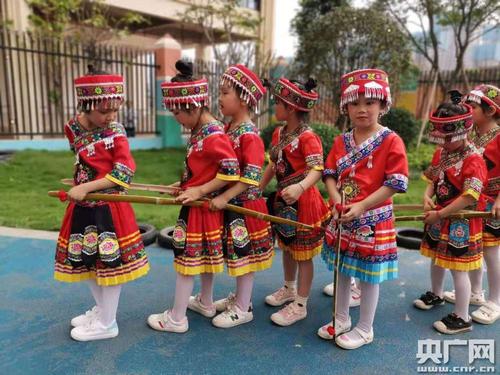"儿童瑶山风韵舞蹈" (ér tóng Yáoshān fēngyùn wǔdǎo) translates to "Children's Yao Mountain Charm Dance" in English. This dance likely refers to a traditional or folk dance style inspired by the culture of the Yao ethnic group, which primarily resides in the mountainous regions of southern China and Southeast Asia.
The Yao ethnic group has a rich cultural heritage, including distinctive music, dance, clothing, and customs. Traditional Yao dances often reflect their connection to nature, the rhythms of rural life, and rituals celebrating harvests, weddings, or other significant events.
Given that this dance specifically mentions "Children's Yao Mountain Charm Dance," it suggests that it may be a simplified or adapted version of a traditional Yao dance intended for children to learn and perform. Such dances often aim to preserve cultural heritage by teaching younger generations about their roots and fostering a sense of identity and pride in their heritage.
The "charm" aspect of the dance likely refers to its aesthetic appeal, gracefulness, and the way it captivates audiences with its movements, costumes, and music. Traditional Yao dances are often characterized by flowing movements, intricate footwork, and colorful costumes adorned with symbolic motifs.
In teaching children the "儿童瑶山风韵舞蹈," instructors might focus on simplicity, emphasizing basic steps and gestures that capture the essence of the traditional dance while being accessible and enjoyable for young learners. This approach ensures that children can participate in cultural activities from a young age, fostering a deeper appreciation for their heritage.

Overall, "Children's Yao Mountain Charm Dance" represents not only a form of artistic expression but also a means of passing down cultural traditions and values from one generation to the next. It serves as a bridge between the past and the present, connecting children to their cultural heritage and fostering a sense of belonging within the Yao community.











